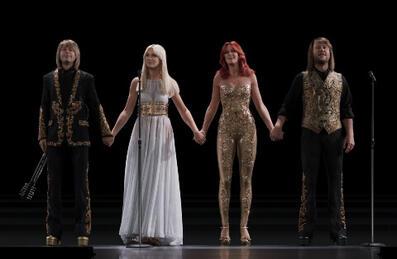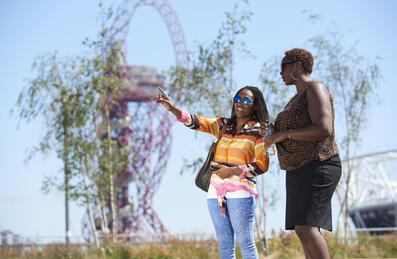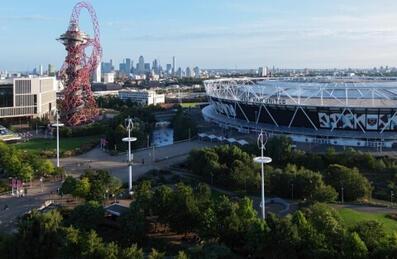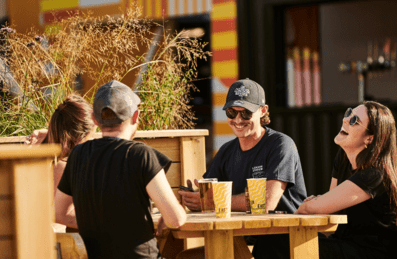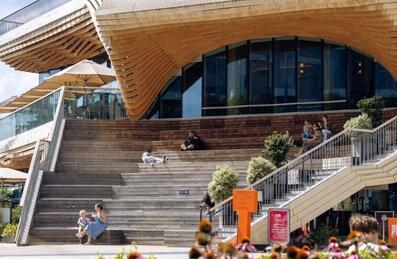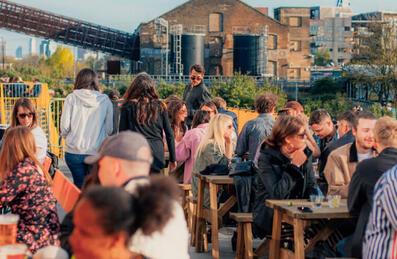
Popular Searches:
Keep up to date
Sign up today for exclusive offers and incredible experiences you won’t want to miss at Queen Elizabeth Olympic Park.
Sign up nowFree online guide to history of Queen Elizabeth Olympic Park site launches
Free online guide to history of Queen Elizabeth Olympic Park site launches
Press Release 01/06/2022
Free online guide to history of Queen Elizabeth Olympic Park site launches
• “What was here before the Olympic Park was created?”- explore the back story of the Park, from the Bronze age to the Digital Age
• The guide features information about 32 historic sites and topics
• Part of celebrations of the 10 year anniversary of London Olympic and Paralympic Games
Today (1 June) sees the launch of the Groundbreakers project, which brings to life the fascinating history of the site of Queen Elizabeth Olympic Park. Over the years the site has contained a Roman bridge, a network of now lost waterways, an anti-aircraft gun emplacement, a sweet factory, a speedway and greyhound track whose popularity rivalled that of football in the 1950s, Prisoner of War camps, a civil defence nuclear training ground, an Iron Age village, gypsy encampments, allotments and social housing.
There are a number of ways to explore this fascinating content: on the project’s website- https://www.livingmaps.org/groundbreakers; by reading a PDF guide and by using a mobile phone to access the Augmented Reality Trail using QR codes displayed on signs at nine points in the Park. The trail features augmented reality 3D models, maps and documentary videos. The trail was developed and tested with young people from Sarah Bonnell School in Stratford and with youth club members across Newham via Newham Youth Empowerment.
The idea for the project began before the Park was constructed, and stemmed from a concern that the site was frequently represented as an ‘industrial wasteland’, when in actual fact it has a long and fascinating history (and natural history) with settlements, leisure spaces and workplaces of great significance.
Content was written by a team including an archaeologist who excavated the site, an ethnographer who interviewed the tunnellers working on the Park site, a researcher who mapped, documented and interviewed over 60 businesses that were displaced by the development, a naturalist and local historians. Historic research for the project was undertaken by students at the University of East London and senior citizens, including the Building Exploratory’s Senior Bees group.
The project was delivered by a not-for-profit, Living Maps Network, and funded by Heritage Lottery and the Foundation for Future London with the support of Queen Elizabeth Olympic Park.
Dr Toby Butler, Livingmaps Network director, said: “It has taken years of work and the involvement of dozens of people who feel passionate about the fascinating history of the Park site to research this guide. We hope it will be of interest both to the casual park visitor as well as residents, old and new, who would like to know something of the extraordinary history that is buried beneath their feet.”
Peter Tudor, Director of Venues, LLDC, said: “Everyone remembers the superb summer of sport of London 2012. This project tells the intriguing stories of what was here in east London before Queen Elizabeth Olympic Park was created. We’ve been delighted to support this project unearthing fascinating facts – from ancient history to the present day.”
The project’s website, https://www.livingmaps.org/groundbreakers, includes teaching resources designed for youth groups visiting the park, including a ‘Top Trumps’ game in which students have to consider how the site has been used in a variety of ways to manage risk to Londoners, from threats including disease, flooding, bombing, global warming and nuclear war.

